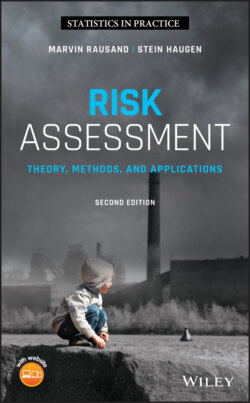Читать книгу Risk Assessment - Marvin Rausand - Страница 49
Example 2.3 (Hazardous events)
ОглавлениеA hazardous event was defined as an event that may cause harm, and it was suggested to use the first abnormal event as the hazardous event. The following examples illustrate this:
1 (1) An object dropping from a crane. The process of lifting itself is completely normal and is not considered a hazardous event. If, on the other hand, the object that is lifted starts falling, it is definitely an abnormal situation.
2 (2) A car driver losing control of the car. Driving is a very common and normal activity, but if the driver loses control of the car while driving, the situation may develop into a serious accident with severe consequences.
3 (3) An aircraft engine stopping during flight. It should be fairly obvious that this is an abnormal situation. Most commercial planes have two engines and are able to land without problems with one engine not working. It is still reasonable to classify this as a hazardous event in a risk analysis.
4 (4) A person slipping when climbing a ladder. Climbing a ladder is normal, but if the climbing person slips, she may lose her balance and fall off the ladder, with potentially serious consequences. On the other hand, she may be able to regain her hold and balance again, avoiding an accident. A hazardous event will therefore not necessarily always lead to an accident.
In all these examples, some prerequisites need to be in place for the event to occur. In the case of the car, control can only be lost if the car is driving, dropped objects are only possible if something has been lifted, the aircraft engine stopping is critical only during flight, not on the ground. This is an indication that hazardous events on their own not necessarily are critical but need to occur in a context where a hazard is present.
